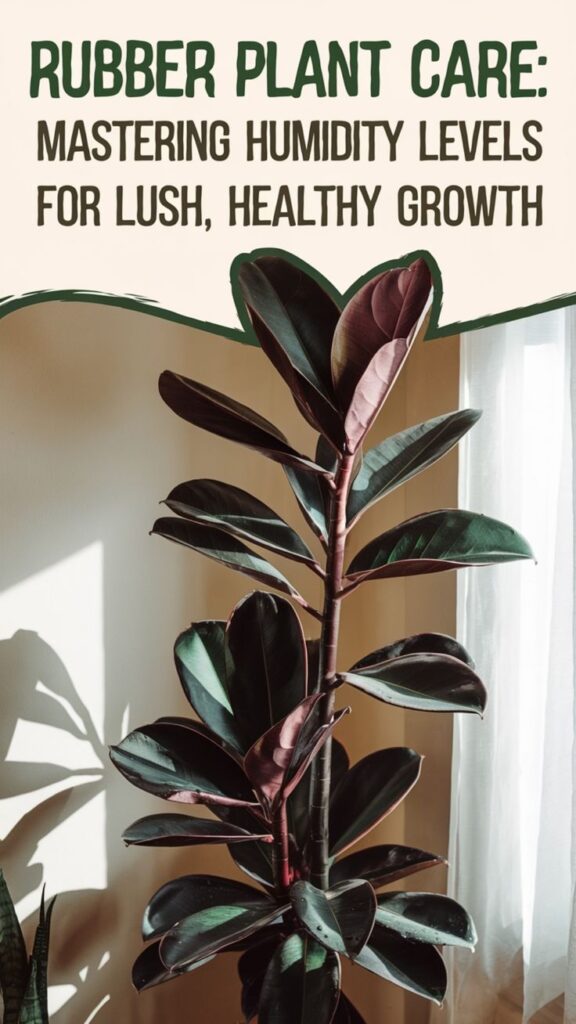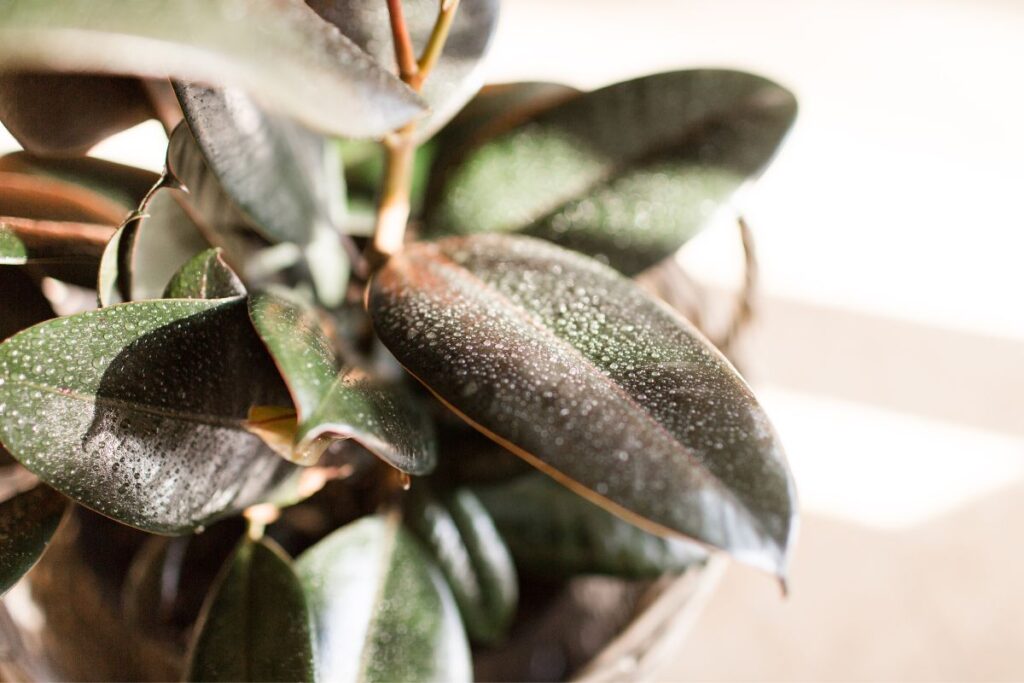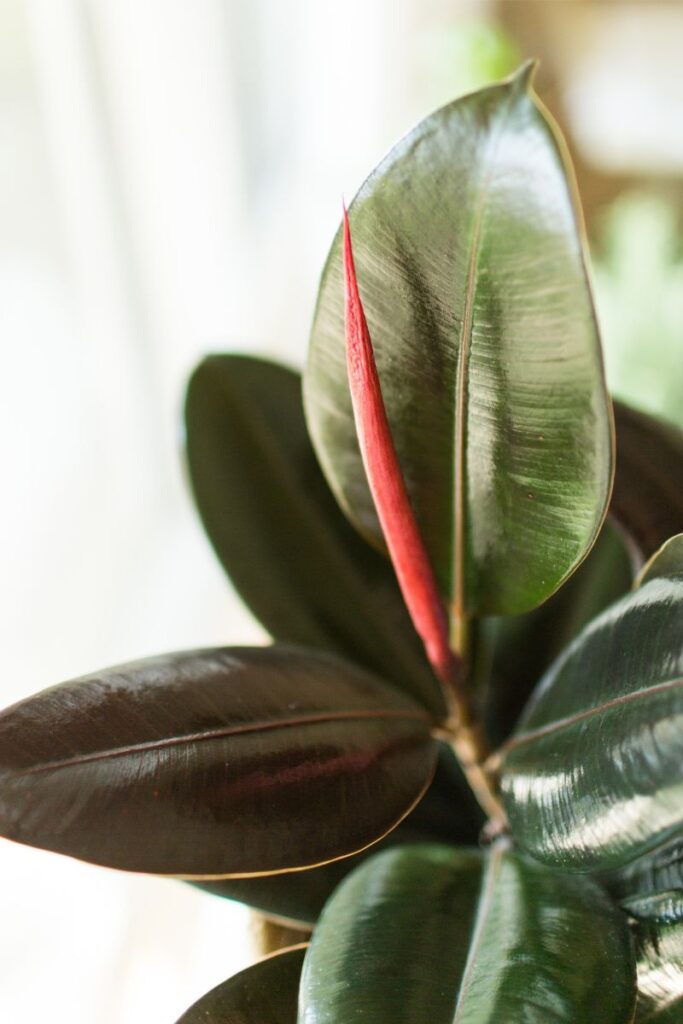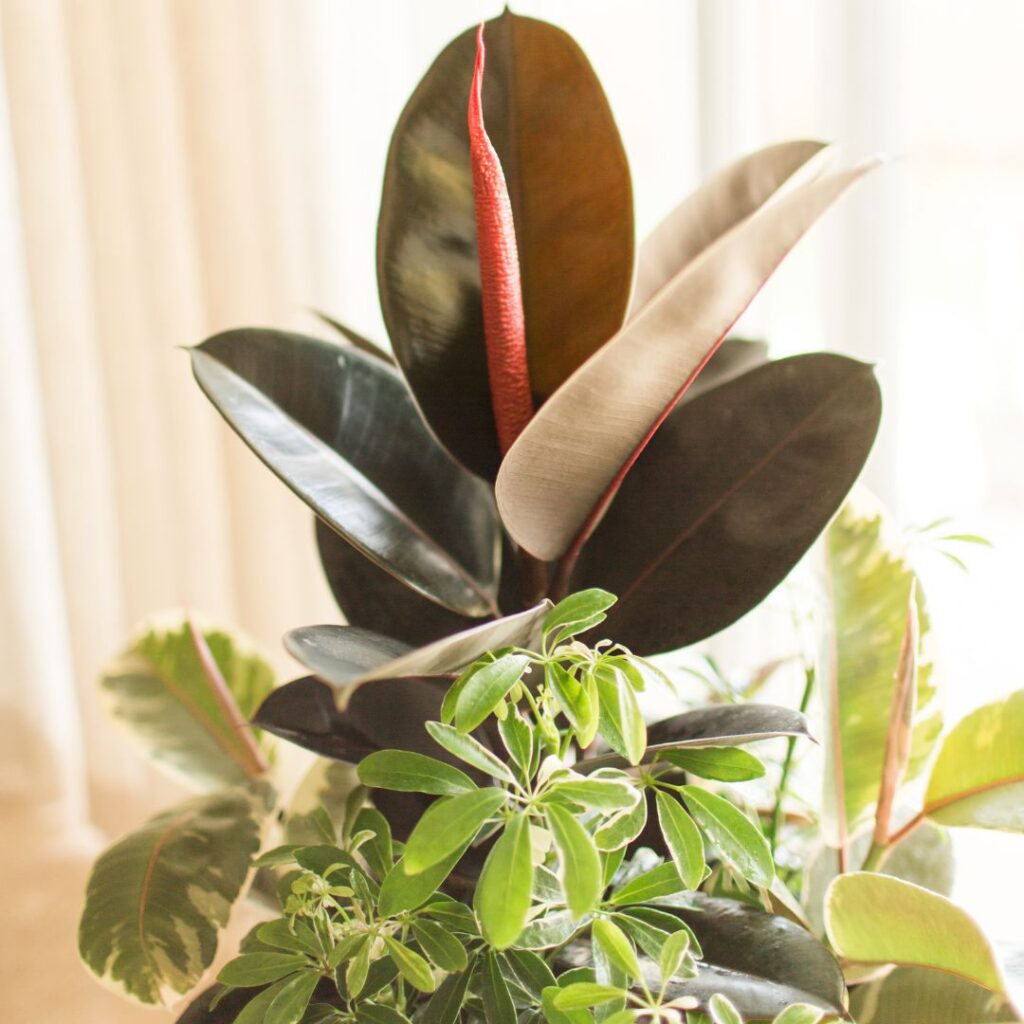Are you curious about whether rubber plants like humidity? You’re not alone! It’s important to understand the humidity levels of your home to keep your rubber plant happy and healthy. In this article, we’ll explore how to figure out the humidity level in your home as well as signs that indicate your rubber plant needs more humidity. We’ll also look at ways to increase the humidity for your beloved plant.

Contents
Do Rubber Plants Like Humidity?
Yes, rubber plants love high humidity levels! Keeping your rubber plant in a humid environment will help keep it healthy and thriving. To do this, you should take into account the watering frequency, soil type, ventilation needs, and temperature control of your plant. Additionally, keeping the light exposure adequate is important to provide enough energy for photosynthesis. Depending on how big your plant is, you should water it once or twice a week with lukewarm water, while ensuring that the soil isn’t soggy or wet.
You can increase humidity around your plant by placing it near a humidifier or misting it lightly but frequently. Make sure there is good air circulation around the plant to avoid fungal diseases and insect infestations. Lastly, ensure that the temperature in its environment remains at an ideal level; too much heat can cause wilting of leaves and too cold temperatures can make the leaves yellowish-brown. With these tips in mind, you can be sure that your rubber plant stays healthy and happy!

How To Determine Humidity Levels In Your Home
Measuring humidity levels in your home is the best way to determine if it’s suitable for houseplants. A hygrometer is an inexpensive and easy-to-use device that can quickly measure indoor temperature, humidity, and other environmental conditions. This information can provide valuable insight into the types of houseplants that will thrive in your home, as well as watering schedules, fertilizing tips, and light requirements.
- Face Icon Comfort Indicator
- Highly Accurate Sensors
- Fast Refresh Rate
- Compact Display with Large Digits
- Multiple Placement Options - Tabletop Stand / Magnetic Back / Hanging Mount
Signs of high humidity include fogging or condensation on windows, mold or moisture on walls, and static electricity. Low humidity is characterized by dried or cracking paint or wood. By monitoring these indicators with a hygrometer, you’ll be able to make informed decisions about which plants are best suited for each room in your home. Additionally, keeping track of the climate in each area will help ensure the health of any existing houseplants as well as optimize soil types for new ones.
Knowing how humid a particular room is allows you to create an ideal environment for live plants throughout your home so they can flourish without worry. With a hygrometer measuring changes in air quality inside your residence becomes a simple task that provides peace of mind while caring for all sorts of greenery indoors.
Related Post:
17 Amazing Rubber Plant Benefits
Signs Your Rubber Plant Needs More Humidity
If you’re noticing signs of wilting or yellowing leaves on your rubber plant, it may be a sign that it needs more humidity. Rubber plants thrive in humid environments, and without adequate moisture levels they can become stressed. Here are some signs to look out for:
- Check the leaves – if they appear dry or wilted, misting them with water may help.
- Examine the potting soil – if it feels overly dry, make sure to add water or change the potting soil choice to one that retains more moisture.
- Ensure proper air circulation – keeping an eye on room temperature and ensuring any fans or heaters aren’t too close to the plant will help regulate humidity levels in your home.
- Monitor humidity levels – investing in a hygrometer can be helpful to measure how much moisture is in your home’s air.

Ensuring that your rubber plant has access to adequate amounts of moisture is essential for its health and wellbeing. Taking steps such as misting the leaves regularly, providing good air circulation around the pot and investing in a humidity gauge can all help keep your rubber plant happy and healthy!
How To Increase Humidity In Your Rubber Plants
To ensure your rubber plants are getting the humidity they need, try grouping them together, using a humidifier, adding a pebble tray, and placing them near an aquarium. You can use all or some of these methods to raise the moisture levels in the air around
Group Plants Together
If you want to increase the humidity for your rubber plants, one of the easiest ways is to group them together. This will create a mini-microclimate around them, which increases the humidity in the immediate area.
When grouping your rubber plants, make sure to leave some space between them. This will ensure that the air can circulate and the humidity won’t be too high. Additionally, you should place them in an area of your home that gets indirect light, such as near a window.
Related Post:
Leggy Rubber Plant (Causes And Solutions)

Use A Humidifier
Using a humidifier near your rubber plants can help increase the humidity in their environment. This is particularly important since rubber plants need higher humidity levels to thrive. Humidifiers can regulate and maintain the indoor climate so that the rubber plant’s potting mix retains enough moisture, which helps to reduce its watering frequency. By creating a more humid atmosphere, you can also use misting techniques to directly provide additional hydration for your plants. With this in mind, it is important to select the right type of soil when potting your rubber plant and be mindful of its overall indoor climate.
Add A Pebble Tray
In addition to using a humidifier, another great way to keep your rubber plant healthy is by adding a pebble tray. A pebble tray helps increase the moisture in the air around the plant, which is essential for its health and growth. Here are some tips for setting up your pebble tray:
- Add water to the tray so that it’s just below the top of the stones.
- Misting leaves regularly will also help add extra moisture.
- Make sure you adjust temperatures accordingly when watering and changing soil to ensure your rubber plant gets all of the moisture it needs.
Creating and maintaining a pebble tray ensures your rubber plant gets enough humidity without over-watering or under-watering. This is an easy and safe way to give your rubber plant just what it needs!
Place Plants Near An Aquarium
Placing your rubber plant near an aquarium can provide it with extra humidity. You should remember to water your plants regularly and mist them occasionally. Make sure that there is good air circulation around the plant, and use potting soil that drains well. Monitor the temperature of both the aquarium and the plant to prevent overheating or chilliness. This will help ensure that your rubber plants remain healthy, as they thrive in humid environments. Additionally, if you have a fish tank heater nearby, consider turning it off while you are away from home to avoid raising the temperature too high for your rubber plants.
Conclusion
You’ve learned that rubber plants thrive in humid environments. To make sure your rubber plant is getting the humidity it needs, use a hygrometer to check the humidity levels in your home. If the levels are below 40%, you’ll need to increase the humidity for your rubber plant. You can do this by misting and grouping plants together, as well as using a humidifier or pebble tray. With these tips, you’re sure to have a healthy and happy rubber plant!

